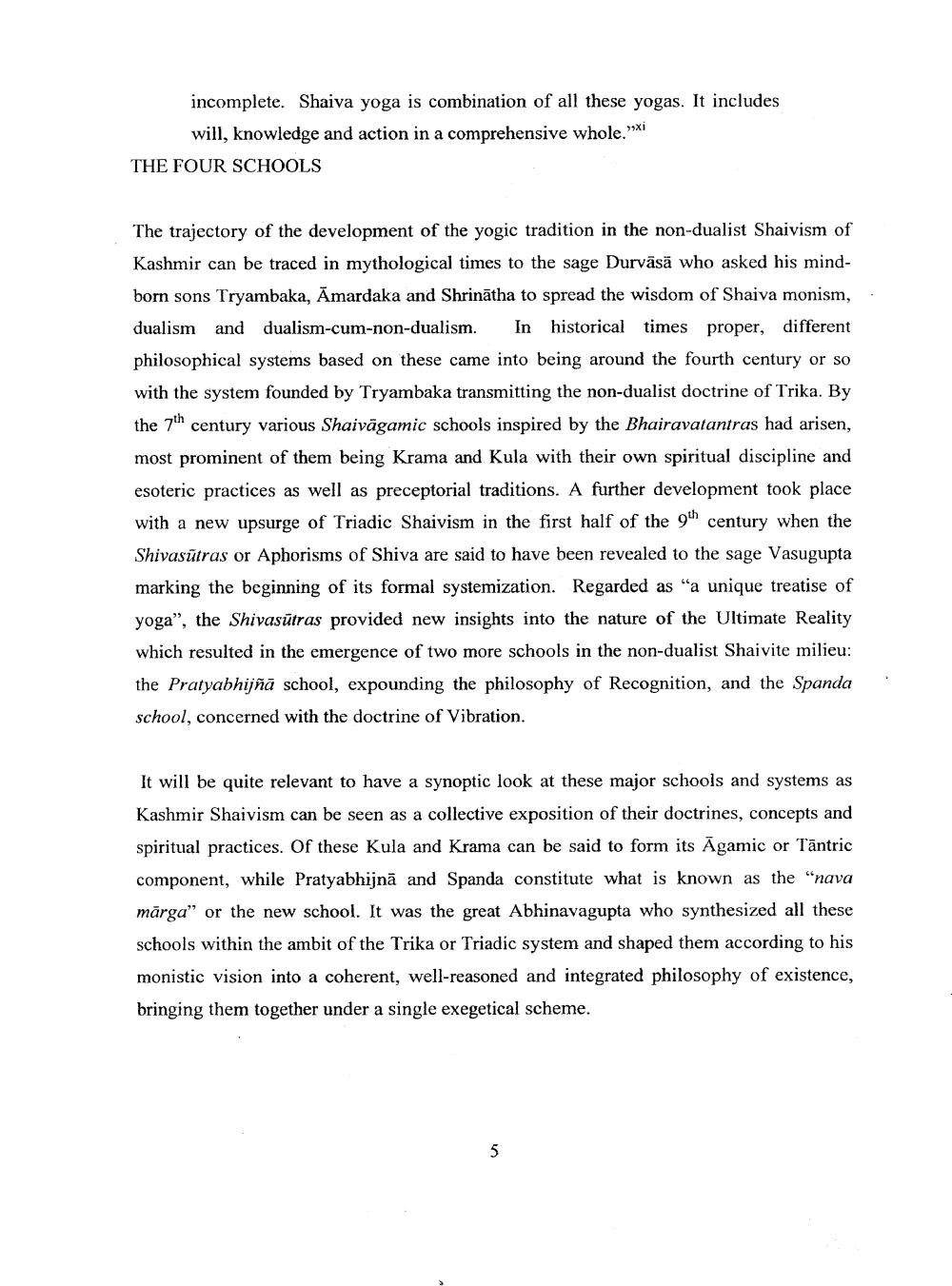Book Title: Yoga of Synthesis in Kashmir Shaivam Author(s): S S Toshkhani Publisher: S S Toshkhani View full book textPage 5
________________ incomplete. Shaiva yoga is combination of all these yogas. It includes will, knowledge and action in a comprehensive whole. "Xi THE FOUR SCHOOLS The trajectory of the development of the yogic tradition in the non-dualist Shaivism of Kashmir can be traced in mythological times to the sage Durvāsā who asked his mindborn sons Tryambaka, Amardaka and Shrinātha to spread the wisdom of Shaiva monism, dualism and dualism-cum-non-dualism. In historical times proper, different philosophical systems based on these came into being around the fourth century or so with the system founded by Tryambaka transmitting the non-dualist doctrine of Trika. By the 7th century various Shaivāgamic schools inspired by the Bhairavatantras had arisen, most prominent of them being Krama and Kula with their own spiritual discipline and esoteric practices as well as preceptorial traditions. A further development took place with a new upsurge of Triadic Shaivism in the first half of the 9th century when the Shivasūtras or Aphorisms of Shiva are said to have been revealed to the sage Vasugupta marking the beginning of its formal systemization. Regarded as "a unique treatise of yoga", the Shivasütras provided new insights into the nature of the Ultimate Reality which resulted in the emergence of two more schools in the non-dualist Shaivite milieu: the Pratyabhijñā school, expounding the philosophy of Recognition, and the Spanda school, concerned with the doctrine of Vibration. It will be quite relevant to have a synoptic look at these major schools and systems as Kashmir Shaivism can be seen as a collective exposition of their doctrines, concepts and spiritual practices. Of these Kula and Krama can be said to form its Āgamic or Tāntric component, while Pratyabhijnā and Spanda constitute what is known as the "nava mārga" or the new school. It was the great Abhinavagupta who synthesized all these schools within the ambit of the Trika or Triadic system and shaped them according to his monistic vision into a coherent, well-reasoned and integrated philosophy of existence, bringing them together under a single exegetical scheme.Page Navigation
1 ... 3 4 5 6 7 8 9 10 11 12 13 14 15 16 17 18 19 20 21 22 23 24 25 26 27 28 29 30 31 32 33 34 35 36 37 38 39 40 41 42 43 44 45 46
